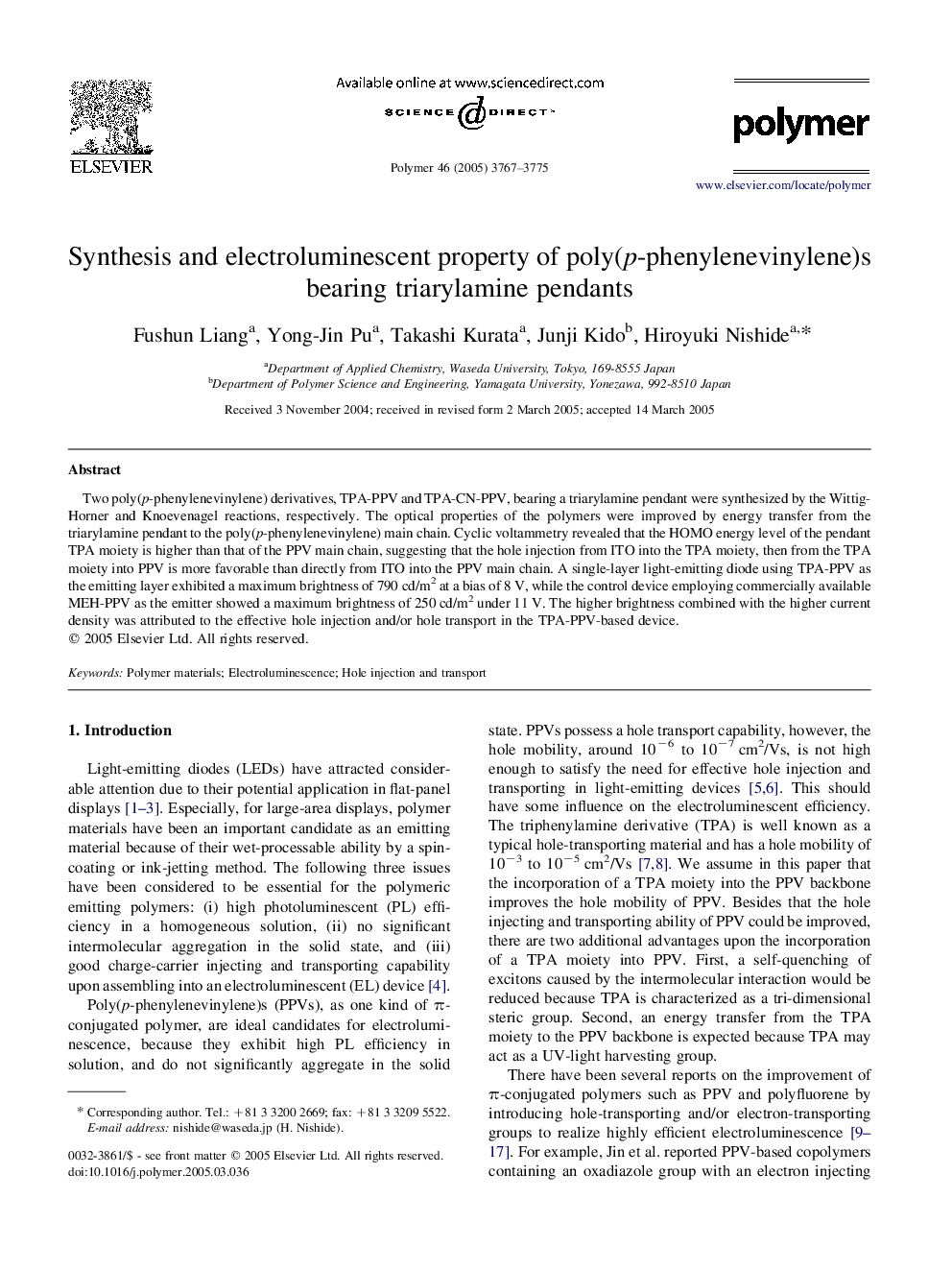| Article ID | Journal | Published Year | Pages | File Type |
|---|---|---|---|---|
| 5191329 | Polymer | 2005 | 9 Pages |
Two poly(p-phenylenevinylene) derivatives, TPA-PPV and TPA-CN-PPV, bearing a triarylamine pendant were synthesized by the Wittig-Horner and Knoevenagel reactions, respectively. The optical properties of the polymers were improved by energy transfer from the triarylamine pendant to the poly(p-phenylenevinylene) main chain. Cyclic voltammetry revealed that the HOMO energy level of the pendant TPA moiety is higher than that of the PPV main chain, suggesting that the hole injection from ITO into the TPA moiety, then from the TPA moiety into PPV is more favorable than directly from ITO into the PPV main chain. A single-layer light-emitting diode using TPA-PPV as the emitting layer exhibited a maximum brightness of 790Â cd/m2 at a bias of 8Â V, while the control device employing commercially available MEH-PPV as the emitter showed a maximum brightness of 250Â cd/m2 under 11Â V. The higher brightness combined with the higher current density was attributed to the effective hole injection and/or hole transport in the TPA-PPV-based device.
